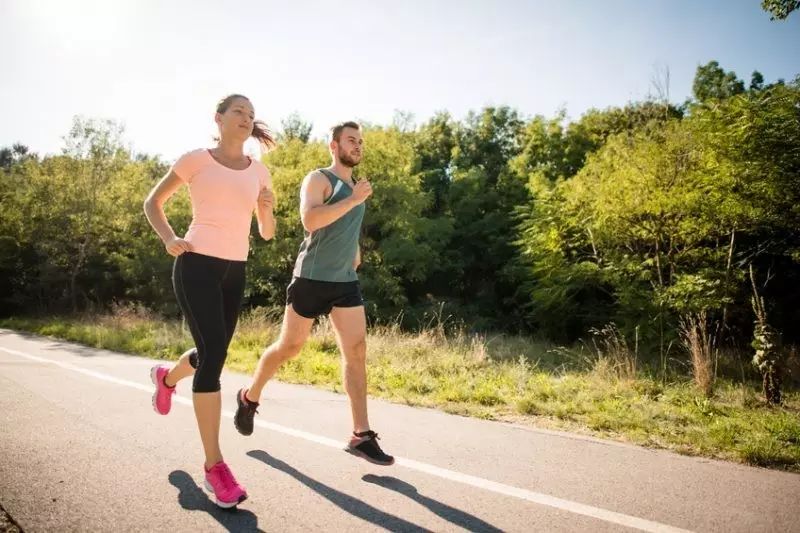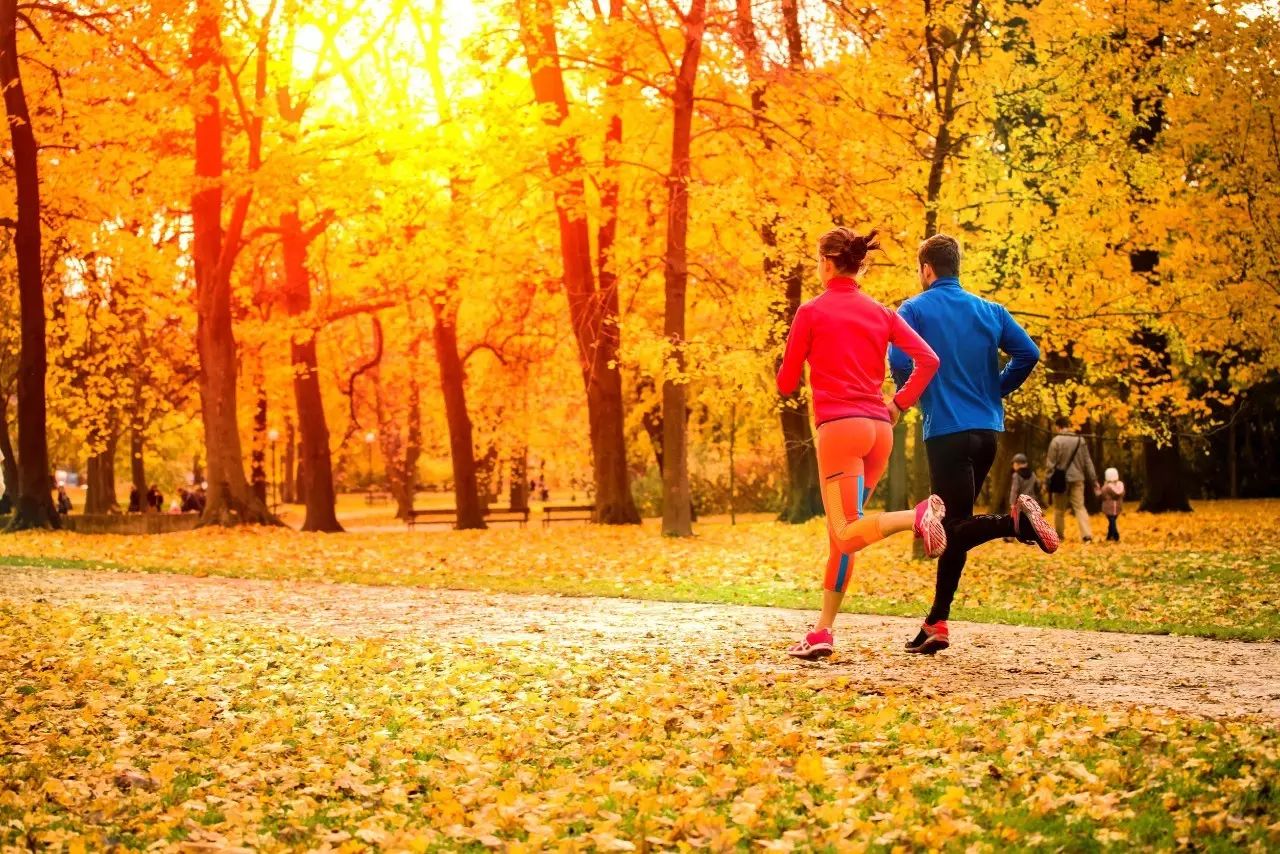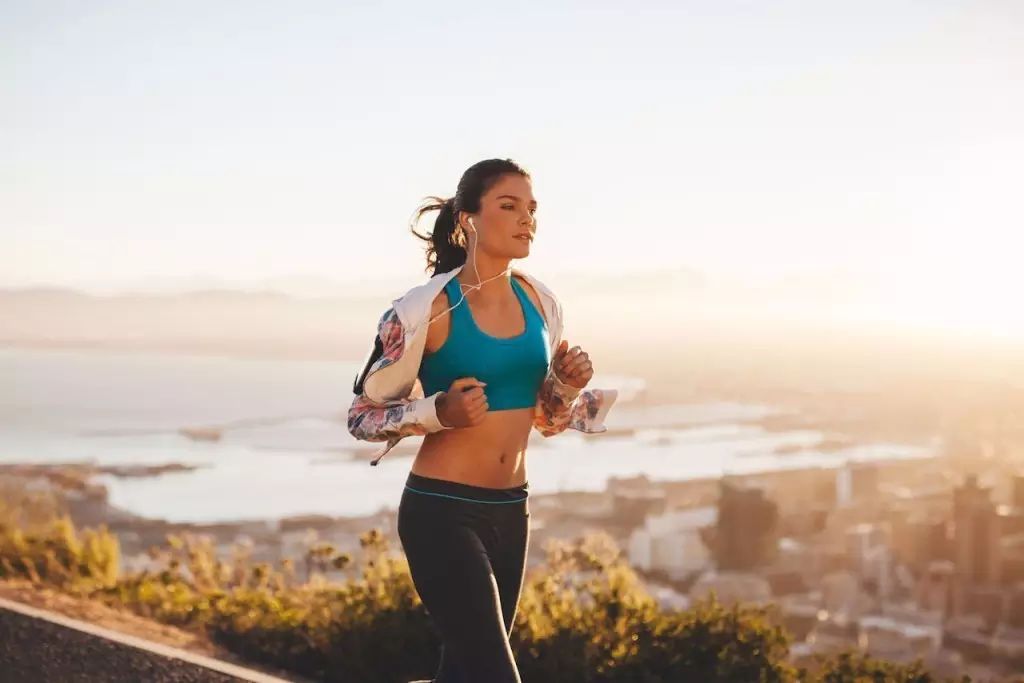
If you are a runner, you must know that running can change your life. Running is not just a sport for you, but a way of life. There are many benefits of running, some of which you may not know.
Written by: Orange Orange Editor: Orange Orange

1, physical and mental health
Runners are a group of happy people, because we can feel the running climax. It is very simple to make a runner unhappy. For example, they trained for a favorite race for months, and the race was cancelled. This is the only way to turn a runner’s smiling face into a crying face.

2, strengthen the heart and lungs
Runners can strengthen their heart and lungs by running a kilometer. If you are just a bystander in a marathon, your heart and lung function will not be enhanced. The runner’s cry is strong and proud.
3, prevention of hypertension
When you run, your arteries will continue to expand and contract, which can keep your blood pressure within the normal range.
4, improve immunity
Regular running can improve your body’s immunity to some bacteria such as causing colds. Unless you are preparing for a marathon, high-intensity running will not improve your immunity.
5, keep in shape
Running can burn most of the fat, which means you need to add more calories, especially after a long-distance stretching. Unfortunately, running doesn’t mean you can eat all the food without gaining weight.
6, enhance leg strength
Runners’ legs are the source of running energy. It can make you run from A to B, make you run uphill and downhill, and make you run faster on the street. When you prepare for a marathon, you will find that your legs become stronger.
7. release the pressure
Running can raise the level of serotonin in the brain, which can make you more calm and relaxed. If you are under too much pressure, just go running.
8, increase bone density
When running, the bones will feel pressure, and under pressure, some special substances will be absorbed by the bones, which will make the bones stronger. However, running won’t turn your bones into an impregnable wall.
9. Improve joint strength and stability.
Running can strengthen joint ligaments and tendons. When you accumulate a certain amount of running, you will find that your joints have become stronger, you can run more miles, and you can adapt to various roads. But that doesn’t mean you won’t sprain your ankle. If there is any difference, it only takes you four weeks to recover after spraining, and it takes eight weeks to recover without running.
10, enhance confidence
Once you start running, your self-confidence will increase. You will feel that life and weight will never get out of control again. When you put on tight pants, you will also feel beautiful.
Although running has so many benefits, you need to run in the right way to achieve the purpose of fitness, weight loss and shaping, otherwise it is easy to get hurt.
Although running is an easy sport, as long as there is a field, you can run with your legs open. But you do need a pair of running shoes. Compared with ordinary shoes, running shoes can provide more cushioning and protection. Especially for beginners, ankle strength is still very weak, and it can’t support the impact brought by long-term running.
About running posture: the upper body should be straight and slightly lean forward. Keep your head up, keep your eyes on the front, not your feet, keep your shoulders straight, and don’t hunch over your chest.
About landing mode:If you are a beginner or jogging, it is recommended to land on your feet. It is not recommended for runners to run with their heels on the ground, which is not only inefficient and produces braking force, but also makes ankles, knees, back and hip joints too tense. If you have to land with your heel, you should also roll to the whole sole quickly. As for the forefoot landing, it requires strong calf muscle strength as a support, so the first runner should not learn, and it is easy to get hurt. The landing site should be below the center of gravity of the body, and don’t exceed the knee when landing.
About the swing arm: Hold it gently with both hands, neither too tight nor too loose. The big arm and the small arm are at 90 degrees, but the front swing is not elbow, and the back swing is not hand.
About breathing: It is recommended to breathe in the abdomen instead of in the chest. It can be two-step one-breath two-step inhalation or three-step one-breath three-step inhalation. Maybe it’s not easy to master the breathing rhythm at first. Here’s a trick, that is, exhale when your left foot lands, and inhale when your right foot lands. After many attempts, you will slowly find the feeling of breathing.
Last but not least, warm up before running and stretch after running. As for the way to warm up, jog for 1-5 kilometers or 5-10 minutes.
Don’t sit down or lie down immediately after running, walk for a while, and then stretch after your heart rate drops. Stretching can relax muscles, recover as soon as possible, make muscle lines more beautiful, and most importantly, make calves look thinner. I don’t know how to stretch after running. Come on, learn after me!
1. Groin and core muscles
Sitting posture, feet facing each other, hands lightly holding the soles of the feet, leaning forward to stretch groin and core muscles, knees should be relaxed without exertion, the more you lean forward, the greater the stretching intensity, and the range of action can be slightly tight, lasting for about 30 seconds.
2. Lower back and neck
Sit cross-legged, bend your upper body forward, touch the floor in front with your hands, imagine your hands and head extending forward, and let your whole back relax and stretch; Some people may have a tight back and their upper body can’t bend forward too much, so just feel stretched, and don’t force yourself forward.
This action has a good relaxation effect on the neck and back, not only after running, but also for office workers who sit in a sedentary office.
3. Hip, hind leg muscles and sole
Sitting posture, open your feet to the left and right, until the groin is slightly tight, take a deep breath, try to hold the soles of your feet with both hands and pull them up slightly. You can stretch the muscles behind your legs and plantar fascia synchronously, and the left and right legs alternately, and you will find that the stretching range will gradually increase; Maybe your legs can’t be straightened completely when stretching, or your hands can’t touch the soles of your feet. In this case, just extend your hands to the instep and feel stretched behind your legs and back. Don’t stretch them reluctantly, so as not to cause strain to the muscles behind your legs.
The variation of this movement is to bend one leg backward, straighten one leg, and lean forward with the upper body as well. Try to hold the soles of your feet with both hands, which can stretch the plantar fascia, hind leg muscles, hip joint, quadriceps quadriceps, lower back and neck synchronously. It is an all-round stretching movement.
4. Abdomen, tibialis anterior and quadriceps femoris
Continue the previous movement, and slowly let your body lie down. You can support it with your hands first, and then try to lie down completely after the quadriceps of your back leg has been stretched initially. If your hips are too tight, you may not be able to lie down, so just keep your hands supported and lie down.
The quadriceps femoris is the muscle group on the front side of the thigh, which is needed when climbing, running and sprinting. The quadriceps femoris can also protect the knee and disperse the impact absorbed by the leg during running. If you want to strengthen the stretching of the front side of the thigh, you can take the action of kneeling and leaning back. The greater the range of leaning back, the greater the stretching intensity will be.
5. The muscles behind the legs are strengthened and stretched.
Hamstring plays the role of lifting the leg, recovering the pace, and maintaining the running efficiency and movement economy. Too tight hamstring will affect the fluency of the pace, and even more, it will be easy to strain during high-intensity training. To stretch the muscles behind the legs, you can start from lying down, bend your right foot, hold the soles of your feet with both hands, and let your hips and buttocks stretch first.
The second step is to lift the right leg and hold the calf by hand. People with good flexibility can hold the sole, keep the hip still, and slightly extend the right leg backwards. The leg can keep bending, and it is not necessary to straighten it. Just keep the back of the thigh, the calf and the hip tight, and keep the action for 20 seconds, and change sides.
6. Stretching of spine, neck and gluteus maximus
Sitting posture, your feet are bent, your right leg straddles the outside of your left knee, your left hand holds your left knee and fixes your right leg, and your body twists to the right and back, which makes you feel stretched and comfortable. This action can also be extended to the gluteus maximus of the right leg and the muscles on the side of the neck, and the action can be maintained for 20 seconds and changed sides.
When running, with the swing of the swing arm, hip and leg, our spine will actually twist slightly. If the muscle groups on the left and right sides are unbalanced, it may cause the body to twist to a certain place, or one side of the back is tight and sore. Therefore, stretching the muscle groups on the back and spine will help relieve the tension and imbalance of the trunk and help the stability of running.
There is also an enhanced version of this action, lying on your back, stretching your right leg over your left leg, keeping your leg relaxed, turning your body to the right, and putting your hands on the ground to help stretch; If your waist and hips are tight, you may not be able to touch the ground with your hands and feet at the same time. You can ask a friend to help you fix your hips and help your upper body turn to the right until you feel tight on your back. Keep the action for 20 seconds and change sides.
7, lower back and abdomen strengthen stretching
Low back pain is one of the common diseases of modern civilization, especially for office workers who sit in sedentary offices. Too tight lower back will also affect the swing of the lower body, thus limiting the stride, and it is easy to hunch over after running for a long time and unable to maintain the stability of the trunk.
To stretch the lower back and waist, there is an easy and effective action. Take a prone position, hold up the upper body with both hands, and look forward or to the roof, which can effectively stretch the lower back, abdomen and waist.
jabRead the original textchoose and buy
Cost-effective running equipment!
Submission or cooperation: micro signal xiaomishu1992
Mailbox 622001178@qq.com
